That Fit Friend is supported by its readers. I [Jake Boly] run this site myself and buy the gear I review. If you purchase through my site, I may earn commissions on sales, read more here!
Shoes optimized for deadlifts can make a big difference when your goals revolve around pulling new 1-RMs. As you get more specific with your deadlift training, shoes can be the difference between a made lift and missing a quality attempt.
Things like width, upper security, stack height, and outsole grip are all factors to consider with your deadlift shoe selection. These are factors I hyper-focus when assessing shoes for deadlifts.
Far too often, I see other review sites recommend sub-par deadlift shoe picks because it’s what’s popular…like recommending a Nike Romaleos 4 for deadlifts? Come on. Yeah, a couple of “review” sites are recommending a weightlifting shoe for deadlifts, LOL.
I’ve deadlifted over 475+ in every shoe featured in this list to truly assess their performance. Before reading on, I’d suggest taking my quiz to make sure you’re in the right place.
Deadlift Shoes Buying Guide
- Great Pick for Deadlifts/Everything: Tolos Archetpye 2.0
- Great Pick for Powerlifting: AVANCUS Apex Power
- Great Pick for Beginners: Adidas The Total
- Great Pick for Wide Feet: Vivobarefoot Motus Strength
- Great Pick for Beginners: Converse Chuck Taylor All Star
- Great Pick for Sumo Deadlifts: AVANCUS Apex Power
- Great Pick for Versatility: Born Primitive Savage 1
Pick for Deadlifts/Daily Wear: Tolos Archetype 2.0
The Tolos Archetype 2.0 is about as consistent as it gets when it comes to delivering strong deadlift performance mixed with versatility. This is my favorite pick for when you a need a deadlift optimized shoe that works great for lifting and cross-training.
Pros
- Low stack height promotes ground feet
- Grippy outsole has good traction
- Wide toe box
- Looks good for deadlifts and casual wear
Cons
- High-volume feet can find these uncomfortable
- Not the best breathability
Specs/Biggest Pull In These
- Preferred Deadlift Style In These: Either!
- Max Deadlift In This Shoe (thus far!): 570 lbs
- Heel-to-Toe Drop: 0mm
- Removable Insole: Yes
- Weight: 8.85 ounces (size 10 high-top model)
- Sizing: True to size
- For More Info:Read My Review
- Good Alternative: Be Lenka Velocity
Why I Chose the Archetype 2.0 Here
The Tolos Archetype 2.0 is taking my top pick as the best overall shoe for the gym. When it comes to selecting my favorite all-around deadlift shoe I’m most concerned with performance and how the shoe supports my goals.
For deadlifts, I like the Tolos Archetype 2.0 for three key reasons. First, this shoe’s 5.5mm stack height is awesome for getting you close to the ground and providing you with a nice level of ground feedback.
Second, the width of the Tolos Archetype 2.0’s toe box is solid for accommodating toe splay and different foot anatomies. This shoe’s width rivals the width of Vivobarefoot shoes, so I don’t think you’ll need to stress toe splay in this model.
Third and lastly, the outsole tread in this shoe gives you a little more grip than comparable minimalist shoes, so they can be great for different surfaces and deadlift styles. As a bonus, I also like the Tolos Archetype 2.0’s appearance as you can wear them for big deadlifts and out and about for daily wear.
Pick for Powerlifting: AVANCUS Apex Power 1.5
It’s tough to fault the AVANCUS Apex Power models for powerlfiting. They’re quite literally built for the sport of powerlifting and some of their [AVANCUS’] athletes are pulling 1,000+ lbs in these shoes.
Pros
- Low stack height helps with ROM
- Grippy outsole has great traction
- Wide midfoot and forefoot
- Great pick for powerlifting/deadlift-focused goals
Cons
- Can lack versatility for things outside of deadlifts and powerlifting
- Low volume feet may not get enough lockdown in these
Specs to Know/Biggest Pull In These
- Preferred Deadlift Style In These: Either, but these are awesome for sumo deadlifts
- Max Deadlift In This Shoe (thus far!): 545 lbs
- Heel-to-Toe Drop: 0mm
- Removable Insole: Yes
- Weight: 11.45 ounces (size 10 model)
- Sizing: True to size for most
- For More Info: Read My Review
- Good Altnerative: Notorious Lift Radix
My Rationale Behind the Apex Power 1.5 Here
The AVANCUS Apex Power 1.5 is my top pick as the best deadlift shoe for powerlifters. This model was quite literally built and inspired by powerlifters so it has a lot of powerlifting-friendly features.
For example, the Viziun outsole tread in this shoe is aggressive which is awesome for all types of deadlifts. Whether you’re pulling sumo with a wide stance or conventional, you shouldn’t have slip issues in this model even on a meet’s competition carpet.
This model also has a relatively low stack height sitting around ~6mm and it has a removable insole to get even closer to the ground. If you love a lot of ground feel for heavy pulls then you’ll enjoy this construction feature.
In the context of width, this shoe also has a nice wide toe box and the shoe itself has an athletic fit. I like this a lot because it gives this shoe a nice feel and range outside of powerlifting so these can double as your general training shoes as well.
Pick for Beginners: Adidas The Total
The Total is a great option for the lifter who’s starting to dip their toe into getting more focused on their deadlifts. They offer a wide toe box, zero-drop construction, and have a lower stack height than traditional trainers without going full barefoot shoe.
Pros
- Good beginner-friendly powerlifting shoe
- Stable and dense midsole
- Midfoot strap provides extra security
Cons
- Not the lowest stack height
- Versatility can be lacking at times
Specs to Know/Biggest Pull In These
- Preferred Pulling Style In These: Either!
- Max Deadlift In This Shoe (thus far!): 540 lbs
- Heel-to-Toe Drop: 0mm
- Removable Insole: Yes
- Weight: 12.1 ounces (size 10 model)
- Sizing: True to size for wide feet, narrow feet size down a half-size
- For More Info: Read My Review
- Good Minimalist Beginner Alternative: Inov8 Bare XF
My Rationale for Choosing the Adidas The Total Here
The Adidas The Total is taking my top pick as one the market’s strongest deadlift shoes for beginners. In my coaching opinion, The Total is a great option to explore for beginner deadlifters for three key reasons.
First, this shoe’s outsole tread does a good job of providing a nice level of grip on different surfaces. Whether you’re training on rubber gym floors, wood platforms, or the carpet used in competition, you shouldn’t have slip issues in this model.
Second, the additional midfoot strap is awesome for locking down the foot and preventing any form of rolling that could influence one’s balance when pulling. The lower stack height, midfoot strap, and 0mm heel-to-toe drop give this shoe a slipper-like feeling.
Third and lastly, the toe box in this model has a wider and more anatomical shape to it. If you have wide feet or you’re nervous about having a shoe for toe splay, I don’t think that will be a concern in the Adidas The Total.
Pick for Wide Feet: Vivobarefoot Motus Strength
The Motus Strength is a good opton for lifters with wider feet who want a shoe optimized for deadlifts and other forms of training. This is one the few barefoot shoes that works exceptionally great for deadlifts and for things like cross-training and CrossFit.
Pros
- Outsole has good traction
- Sidewalls promote additional lateral support
- Wide toe box
- Great barefoot shoe for tugging and cross-training
Cons
- Expensive price point
- Not the most breathable
- Thick/high-volume feet may want to pass
Specs to Know/Biggest Pull In These
- Preferred Deadlift Style In These: Either.
- Max Deadlift In This Shoe (thus far!): 570 lbs
- Heel-to-Toe Drop: 0mm
- Removable Insole: Yes
- Weight: 8.85 ounces (size 10 high-top model)
- Sizing: True to size for most
- For More Info: Read My Review
- Great EVEN WIDER Alternative: AVANCUS Apex Power
- Good EVEN WIDER Alternative: Be Lenka Velocity
Why I Chose the Motus Strength for Wide Feet
The Vivobarefoot Motus Strength has become one of my favorite shoes for deadlifting when you have wider feet. This model is designed to be great for pretty much everything in the gym and it excels exceptionally well for deadlifts.
Unlike other Vivobarefoot shoes used for training like the Primus Lite III and Primus Lite Knit, the Motus Strength has a much more aggressive tread pattern and a heavier upper construction.
This shoe’s lugs grip the floor well when pulling heavy deadlifts and I don’t think you’ll have issues with sumo or conventional tugs in this model. I’ve pulled 570 lbs in this shoe and never had slip issues whatsoever.
I also like the fit and width of this shoe. I have an E-width foot and have plenty of room to splay my toes in this model and the reinforced sidewalls are great for promoting additional foot security.
Pick for Budget: Converse Chuck Taylor
The Converse Chuck Taylor is a tried and true beginner-friendly shoe that works great for deadlifts — and general lifting. I typically recommend bugdet shoppers grab Chuck Taylors when they want a flat shoe that has good stability, but isn’t super minimalist which will take time to acclimate to and it doesn’t break the bank.
Pros
- Cost-efficient shoe for training
- Decently stable midsole
- High-top and low-top options
- Good for beginners getting into deadlifts/lifting
Cons
- Even the wide option isn’t that wide
- Not the lowest stack height on the market for deadlifts
Specs to Know/Biggest Pull In These
- Preferred Deadlift Style In These: Conventional. Sumo is fine until the outsole fades.
- Max Deadlift In This Shoe (thus far!): 565 lbs
- Heel-to-Toe Drop: 0mm
- Removable Insole: Yes
- Weight: 14.3 ounces (size 10 high-top model)
- Sizing: Size down a half-size for most.
- For More Info: Read My Review
- Good Minimalist Alternative (~$40): AIRHAS Barefoot Shoe
- Good Non-Minimalist Alternative: Vans Sk8-Hi
Why I Chose the Chuck Taylor All-Stay Here
The Converse Chuck Taylor All-Star is a tried-and-true classic for general strength work. It’s not the most optimized or absolute best shoe for deadlifts, but for budget-conscious shoppers, it’s a good option.
For a Converse Chuck Taylor All-Star low-top you can expect to pay $60 and for a high-top $65. This is a pretty fair price point for shoes that typically last a while. Plus, you can opt for more or less ankle support based on your preferences.
Converse Chuck Taylor All-Stars offer a 0mm drop which provides your foot with a flat and grounded feeling. In addition to their 0mm drop construction, Converse Chuck Taylor All-Star shoes also offer non-compressive soles which are fantastic for heavier lifts.
I like this shoe for recreational lifters because it provides the 0mm drop and stability we’re after with deadlift shoes and they can be worn for other lifts and on a casual basis. This makes the Converse Chuck Taylor All-Star much more dynamic compared to other more specific deadlift shoes.
Pick for Sumo Deadlifts: AVANCUS Apex Power 1.5+
The AVANCUS is taking another W in this list, and again, it’s because this shoe is built for powerliftin specfiically, and they’ve had some of the world’s strongest sumo deadlifters test them. The grip and lateral support are…chef’s kiss.
Pros
- Reinforced sidewalls for sumo tugs
- Outsole has a ton of bite
- Low stack height
- Plenty of forefoot width
Cons
- Tongue can be uncomfortable
- Not the best for cross-training
Specs to Know/Biggest Pull In These
- Preferred Deadlift Style In These: Either, but these are great for sumo deads.
- Max Deadlift In This Shoe (thus far!): 545 lbs
- Heel-to-Toe Drop: 0mm
- Weight: 11.45 ounces (size 10 model)
- Removable Insole: Yes
- Sizing: True to size
- Read More: Read My Review
- Good Alternative: Notorious Lift Radix
My Rationale for Choosing the Apex Power 1.5
The AVANCUS Apex Power 1.5 is my top pick for sumo deadlifts. A great deadlift shoe for sumo deadlifts needs to have an aggressive tread to prevent spinning out and slippage.
Sumo deadlift mechanics can vary a lot from lifter to lifter so you’ll want a shoe that will work no matter what for your sumo pulling mechanics and the AVANCUS Apex Power 1.5 is one of the few shoes I feel confident recommending for most in this context.
The tread grips all surfaces pretty well and if you’re a competitive powerlifter then you won’t have to stress your shoes slipping on the carpet your powerlifting federation is using. The medial and lateral side walls are awesome additions here, too.
This model’s wide toe box and beefier ankle are also perks for this shoe being stellar in the context of sumo deadlifts. I also like that the Apex Power has a nice range to its performance and can work for accessories as well outside of sumo tugs.
Pick for Versatile Training: Born Primitive Savage 1
The Savage 1 is a fantastic pick for anyone wanting a training shoe that works fantastic for big deadlifts, but also works great tackling everything. This model’s lower stack height and drop along with its denser midsole give it the edge here.
Pros
- Outsole has good traction
- Midsole is dense and table
- Good toe box width
Cons
- Tongue can press into the top of the foot
Specs to Know/Biggest Pull In These
- Preferred Deadlift Style In These: Either
- Max Deadlift In This Shoe (thus far!): 485 lbs
- Heel-to-Toe Drop: 4mm
- Weight: 11.2 oz (for my size 10 model)
- Removable Insole: Yes
- Sizing: True to size for most.
- For More Info: Read My Review
- Good Alternative: Adidas Dropset 3
- Another Good Alternative: Nike Metcon 1
My Rationale for the Choosing the Savage 1
The Born Primitive Savage 1 is an awesome training shoe for heavy deadlifts and functional fitness. In the context of cross-training shoes, this model has been one of my favorites of recent years to tug heavily in.
The Savage 1 features a dual-density midsole which is stable to begin with but it also has a lower stack height. For deadlifts, this is great because it cuts down your range of motion and limits midsole compression.
In this shoe, I’ve deadlifted up to 485 lbs with no compression issues whatsoever and the outsole did a great job of providing grip on different surfaces. I also like how this shoe performs for CrossFit and general lifting sessions.
Another perk of the Born Primitive Savage 1 is that it’s built with an anatomical toe box which is great for promoting toe splay when deadlifting. If you have wider feet and want to pull heavy, this can be an awesome training shoe to explore.
Deadlift Shoe Buying Tips
Buying Tip 1 — Establish Your Stack Height and Deadlift Specific Needs
Two construction features that you want to explore regarding a shoe’s ability to perform well for deadlifts are a shoe’s stack height and outsole tread. Being low to the ground with a good grip is vital for big deadlifts.
*Stack height entails the amount of material that separates the feet from the floor. Lower stack heights are better for deadlifts.
When searching for deadlift shoes based on your needs, I’d suggest keeping in mind how specific you want to get. For example, do you want shoes solely for deadlifts or for other contexts as well? This can influence what type of shoe you use as versatility can also help influence your picks.
Buying Tip 2 — Grip Matters for Your Deadlift Style
The way you deadlift can influence which deadlift shoes will work best for your performance needs. For example, if you pull sumo then you’ll want a shoe with exceptional grip and reinforced sidewalls since you’ll be pushing harder into the lateral parts of your shoe.
To hedge your bets regarding outsole traction, try to look for shoes with lugs or grip patterns that are a little more aggressive. Flatter treads can be more prone to sliding on different surfaces.
Are Deadlift Shoes Worth It?
Deadlift shoes or shoes that excel for deadlifts can certainly be worth it for anyone who is getting serious about their deadlift training or getting into the sport of powerlifting.
Deadlift shoes support performance by limiting the amount of material that separates the foot from the ground so lifters can optimize their mechanics and overall range of motion.
Not every lifter needs a pair of super-specific deadlift shoes, which is why most of the models listed above function really well for other activities outside of deadlifts.
This way you’re getting quality shoes for deadlifts that are more dynamic in nature so you can also wear them for other activities.
What I would suggest is exploring how exactly you plan to use your deadlift shoes. As mentioned above, if you’re not super focused on deadlifting, then you may want to look for more versatile options like a pair of barefoot shoes, Converse, or even cross-training shoes.
How Should Deadlift Shoes Fit?
When considering deadlift shoes, regardless of the style of shoe you go for, you’re going to want your model to fit fairly snug, but not be overly tight. A snugger fit will prevent your feet from sliding around in the shoe and help you fully connect with the ground.
As a general rule of thumb, you’ll want anywhere from .2″ to .5″ in the toe box, and select options that align with your foot’s overall width.
For example, if you have wider feet, then you may not want to opt for something like Converse as these shoes have a slightly narrower build.
A snugger deadlift shoe fit will also benefit those who pull sumo and rely on balance and traction to move weight optimally. If you’re sliding in your toe box, pushing into and spreading the floor can become an issue.
Deadlift Shoes Vs. Deadlift Slippers
Deadlift shoes versus deadlift slippers generally come down to personal preference. Would you rather deadlift in a more traditional feeling shoe that has more structure, or do you prefer pulling in something that feels similar to a sock and water/swim bootie?
Performance Will Be Similar (For the Most Part)
In most cases, you’ll get similar performances from deadlift slippers and deadlift shoes. They’re both minimalist styles of footwear, which will help cut down the range of motion in the deadlift while increasing ground feel, which can be useful for power production and balance.
I think the nuance of deadlift performance with these types of footwear comes down to your needs and deadlift style. For example, not all deadlift slippers work great for sumo deadlifts — this is why they have sumo-focused slippers.
| Deadlift Shoes | Deadlift Slippers | |
| Heel-to-Toe Drop | 0mm | 0mm |
| Good for Sumo | Most of the Time | Sometimes |
| Good Grip | Yes | Yes |
| Approved for Competition | Yes | Yes (but check with fed) |
Since deadlift slippers have less rigid uppers, they can sometimes have spillover when driving the feet out in sumo deads, whereas using a shoe for deadlifts like a Tolos Archetype 2.0 or AVANCUS Apex Power 1.5 won’t struggle with this.
Outside of this specific context (and the fit difference mentioned above), both styles of footwear are similar in many ways and work great for deadlifts. When deciding between deadlift shoes and slippers, I’d consider how you deadlift and the physical fit and feel you want.
Are Shoes Necessary for Deadlifts?
Answer: Shoes are not an absolute must for deadlifts. In fact, it’s normal to see lifters deadlifting without shoes in most strength sports gyms where rules about footwear are a little more relaxed.
However, while shoes are not “necessary” to be successful with deadlifts they can be useful. This is due to shoes having rubber treads for additional traction support and upper materials that can help provide additional support when wanted.
A Few Occasions When Shoes Can Be Necessary for Deadlifts
- You lift in a gym where you have to wear shoes. Don’t give management trouble even if you love deadlifting barefoot. Just find a good pair of shoes for deadlifts and you’ll get the same performance.
- You plan to compete in powerlifting. You can’t compete barefoot in powerlifting so finding a good pair of shoes that you can wear consistently in prep and feel comfortable with can be useful for meet performance.
- You enjoy the “feeling” of shoes. Some lifters love the “feeling” of shoes and the proprioceptive stability they can promote. Some good examples of this are sumo deadlifters who like having a lateral sidewall to press into or lifters who enjoy deadlifting with high-top shoes for their ankle support.
Why Do People Deadlift Without Shoes?
Answer: It’s a blend of personal preference and performance reasons, generally. In the context of personal preference, some lifters (myself included at times) like “feeling” the ground more when they deadlift.
Deadlifting barefoot can give you increased ground feedback and if you love the proprioception (sensory input) that you get when training barefoot then you’ll likely find that you love deadlifting barefoot as well.
When it comes to performance reasons. First, deadlifting barefoot will help you cut down on the range of motion that you need to lift the weight. High stack heights can you take further away from the ground and add additional work to your deadlift.
You can’t get closer to the ground when deadlifting barefoot. This is also why I suggest barefoot shoes so often for deadlifts. Second, there’s not an upper construction that may restrict toe splay and the arches.
The last thing anyone wants is to deadlift in a snug shoe that limits the feet from doing their natural movement patterns. Deadlifting barefoot is an easy way to ensure you’re allowing the feet to do their natural thing.
Why Trust That Fit Friend Deadlift Shoe Reviews
The testing process for deadlift shoes and shoes that excel for deadlifts is pretty straightforward. To test all of the shoes mentioned above, I deadlifted in every pair featured in this list — a lot.
I’ve trained in every single shoe listed here at or above 475 lbs. This is the amount of weight that I’ll use to gauge stability and in most models, I actually end up deadlifting well over 500 lbs in them based on my training cycles.
When testing deadlift shoes, I’m concerned with three key performance criteria.
- The shoe needs to have a high level of stability. This means that when you’re deadlifting heavyweight, the shoe isn’t compressing or causing you to lose balance or deviate from the strong base you’re trying to create.
- Traction is key. I consider a shoe’s outsole and how much traction it provides on different surfaces. I’m a competitive powerlifter so I’m constantly training on three primary surfaces including wooden platforms, rubber gym floors, and the carpet.
- Stack height assessment and durability. I consider the model’s stack height, price, and upper durability. These are smaller points of performance that can make a big deal in some contexts
Takehome Points
When looking for new deadlift shoes, always consider the context in which you plan to use them. Does this new pair of deadlift-focused shoes align with your training style? If so, proceed and opt for the pair that will match both your deadlift and training goals best!
If you have any questions about deadlift shoes or need assistance in finding the best pair for your needs. Drop a comment below or reach out to me personally via Instagram (@jake_boly or @that_fit_friend).

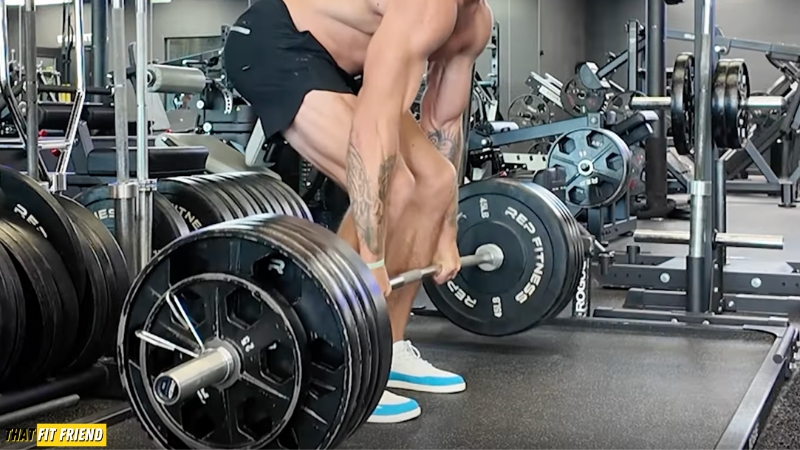
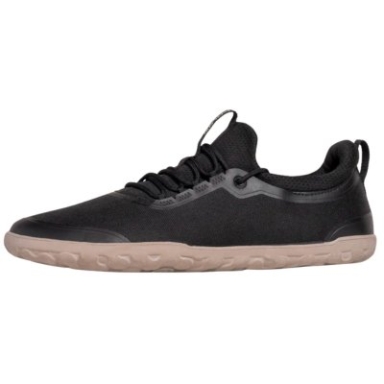

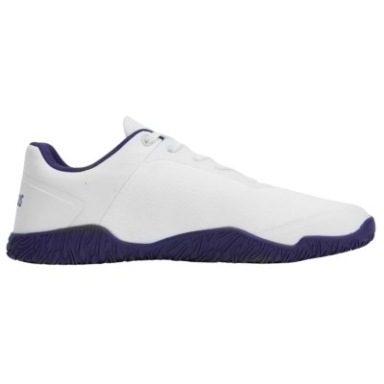



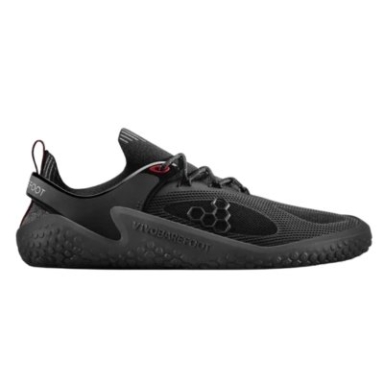
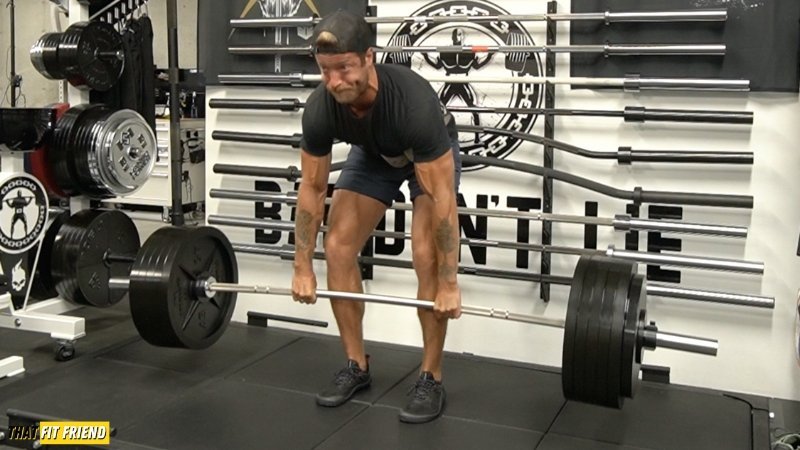










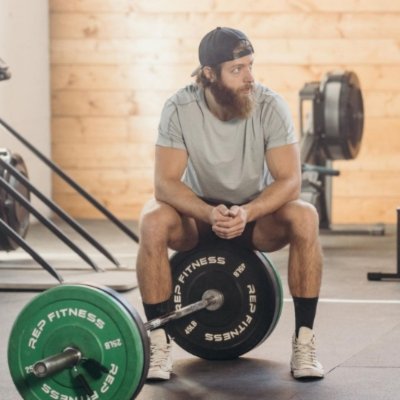



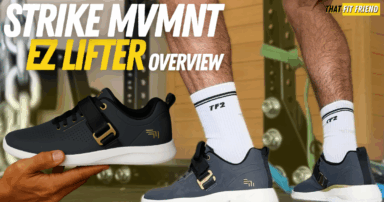
Nate
I love the site and than you for all of the in-depth reviews! I see in 2021 SABO Deadlift Shoes were your top pick, but now they don’t even make the list. Could you elaborate on why? Did they not hold up well over time or some other reason they are no longer recommended? Thank you!
Don’t love the toe box and outsole on them. They’re fine shoes, don’t get me wrong, but their lack of versatility and fit are “meh” when you have shoes that give you more width, ground feel, and can be used for other types of training as well. My preferences have also changed in the context of recommending such a niche shoe for athletes when they could get something that performs the same if not better and give them more versatility for their money. We also didn’t have as many solid barefoot shoe options in 2021.